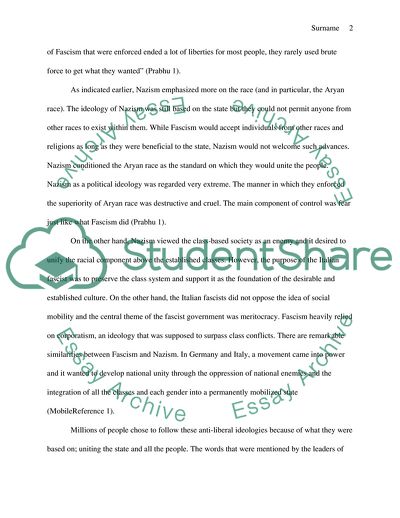Fascism and Nazism - Similarities and Differences of the Two Anti-Libe Term Paper. https://studentshare.org/history/1774149-world-civilizationideologies
Fascism and Nazism - Similarities and Differences of the Two Anti-Libe Term Paper. https://studentshare.org/history/1774149-world-civilizationideologies.


